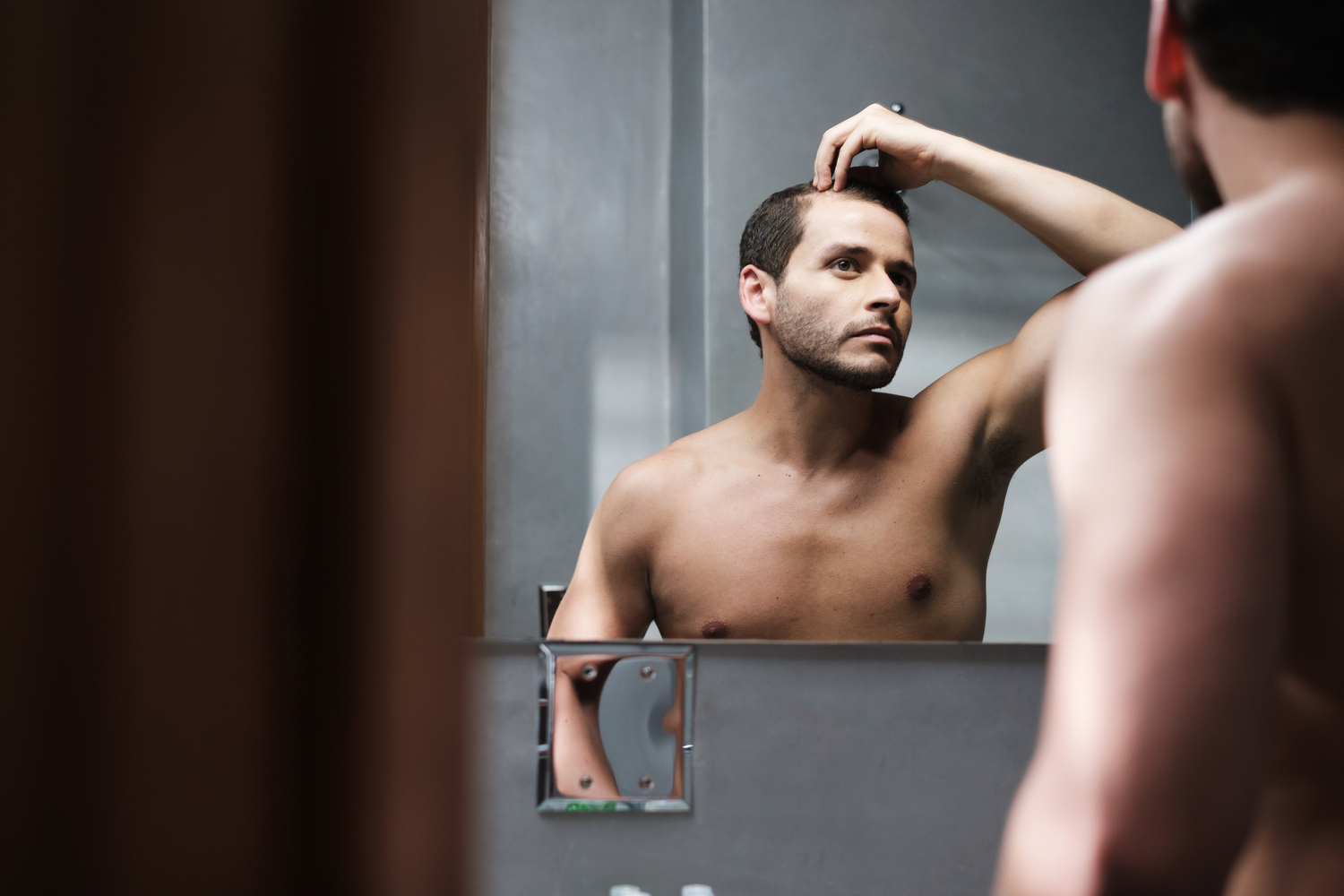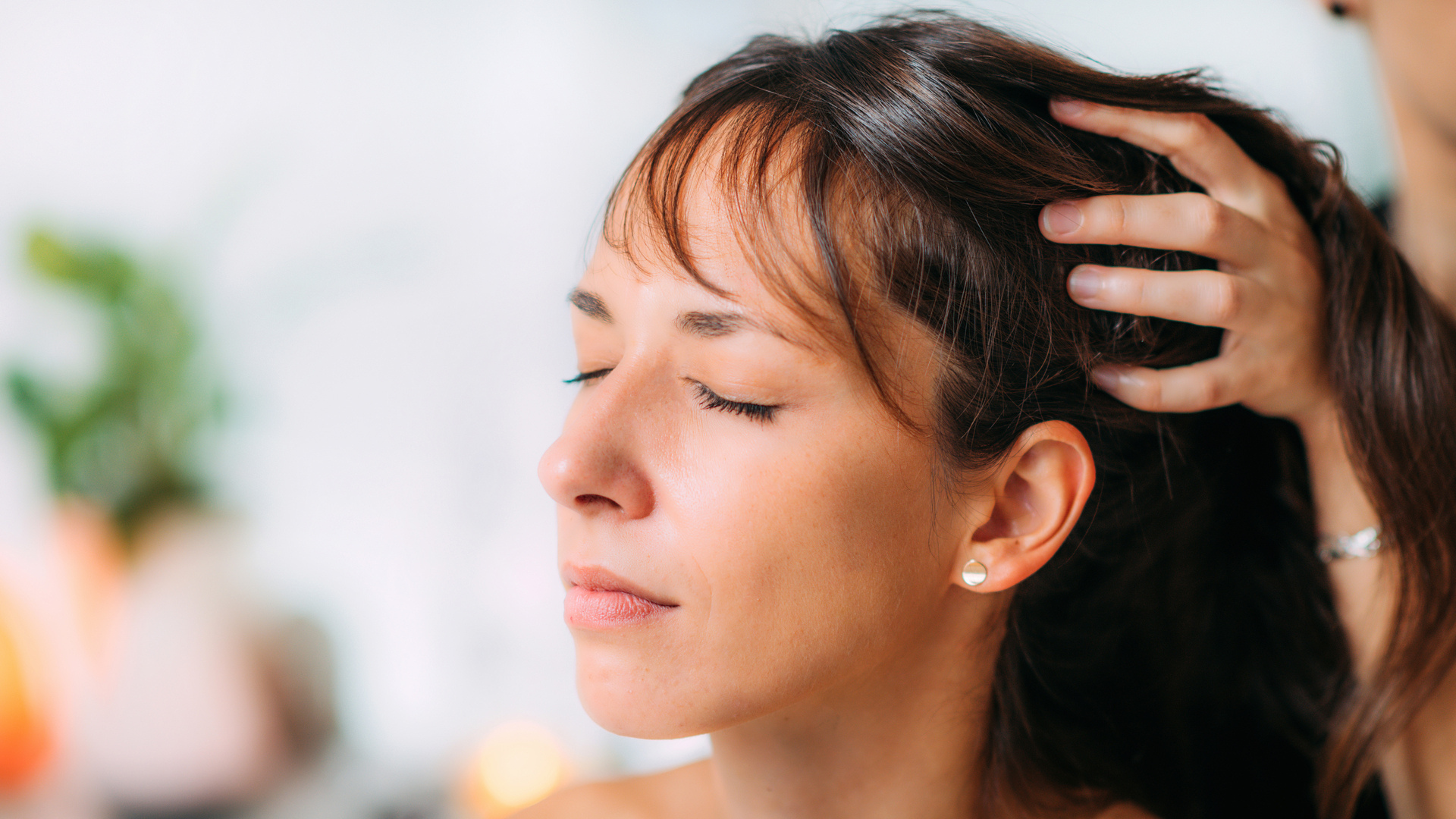When hair begins to thin, recede, or even fall out completely, searching for the right hair restoration program for your needs becomes key. Believe it or not, you don’t always have to turn to expensive hair transplants to achieve your goals.
Should I Get a Hair Transplant? →
Our experts at Amy Brenner, MD & Associates work with men and women of all ages to reclaim their natural hair growth for a fuller, more youthful look. With platelet-rich plasma and other clinically proven treatments, we create fully customized hair restoration plans that actually work.
Understanding the science behind hair growth

Hair growth goes beyond simply growing follicles from your scalp. If it were that easy, we’d all have full, luscious locks. To understand how hair growth works, let’s start from the beginning. By the time a fetus reaches about 22 weeks, it has already formed all of its hair follicles (a total of about one million on the head!).
At this point, a person has the most hair follicles they will ever have; they don’t grow any new follicles later in life. That means your hair will naturally thin as you age, and it is completely normal. Plus, you’ll want to consider scalp expansion, which affects how many hair follicles you have concentrated in one area. For example, if you had thicker hair as a child, that’s just because you had less space for all those follicles.
Hair anatomy
There are two main parts that make up your hair—the follicle and the shaft. The follicle lies inside of your skin, while the shaft is the part you see.
The hair follicle
Even though you can’t see your hair follicle, it’s the only living part of your hair. That means the rest of your hair is technically “dead.” The tunnel-shaped follicle rests in your epidermis (outer layer of skin) and stretches into the dermis (deeper layer of skin). Two sheaths—inner and outer—protect the hair follicle, enabling it to grow properly.
The hair shaft
The hair shaft is made up of keratin (a protein used to strengthen your hair and nails) and has three layers: the cuticle, cortex, and a medulla in coarser hair. These layers help protect your hair shaft against damage and allow it to stretch without breaking.
The hair growth cycle
Having basic knowledge of the hair growth cycle will help you understand how a hair restoration program in Cincinnati works. Here’s why: hair restoration depends on your natural hair growth cycle, and it could also be a big reason why you’re experiencing hair loss.
The hair growth cycle includes three phases:
- Anagen
- Catagen
- Telogen
Phase 1: Anagen
Anagen is the active growing phase where the hair bulb is intact. Hair grows in both directions—upward and downward. During early anagen, the bulb is closest to your skin’s surface and contains an abundance of melanin (pigment). This phase makes hair restoration the most effective.
Phase 2: Catagen
Catagen is a brief intermediate phase between anagen and telogen. Basically, it’s a regression period when the hair stops growing but hasn’t started shedding. During this phase, your body also absorbs the lower third of the follicle.
Phase 3: Telogen
Telogen is the resting phase. However, just because it’s “resting” doesn’t mean your hair falls out right away. First, the hair follicle connects to the hair shaft, forming “club hair.” If you notice a strand of hair with a bulb on the root end, that’s club hair. The bulb keeps the hair shaft in the scalp until it finally sheds and the process starts all over again.
When something disrupts the cycle or you have damaged hair follicles, thinning hair and balding can occur. Keep in mind that all hair isn’t in the same phase at once. If it were, you’d have a ton of hair one moment and be completely bald the next.
What causes hair loss?

There are a multitude of reasons why someone loses hair, which can make treating the issue difficult or frustrating. Hair loss, also known as alopecia, doesn’t encompass only one condition; it describes all forms of hair loss. Therefore, the causes behind hair loss often depend on the type of hair loss you’re experiencing (we’ll go into more detail later). These factors include:
Genetics: Unfortunately, most hair loss stems from genetics, meaning there’s really nothing you can do about it without a proper hair restoration program. Your heredity determines where and how soon you’ll start losing hair, especially for men.
Hormonal changes: Hormones play a huge role in a lot of your bodily functions, so it’s no wonder that even the slightest change can affect hair growth. For example, women may have thicker hair during pregnancy only to have it fall out after birth. Other hormonal factors include menopause and thyroid disorders.
Medical conditions: Certain medical conditions can cause temporary or permanent hair loss. This includes ringworms, trichotillomania (hair-pulling disorder), and conditions that cause patchiness.
Medications: Along with medical conditions, medications can also cause your hair to thin or even bald. Certain medications for acne, blood pressure, depression, and more may disrupt your natural hair growth cycle.
Stress: Whether physical or mental, stress can temporarily cause hair loss. Usually once the body relaxes, hair regrows.
Tight hairstyles: Hairstyles like tight ponytails and braids tug at the scalp. They are fine occasionally, but consistently wearing tight styles may cause your hair to start thinning. This is especially true around the hairline.
Types of hair loss
Not everyone will lose hair the same way. Men and women typically experience alopecia completely differently. While there are many variations of hair loss, we will detail the most common types we see at Amy Brenner, MD & Associates.
Androgenetic alopecia
Androgenetic alopecia is the most common type of hair loss. In the U.S. alone, it affects more than 50 million men and 30 million women, and it’s completely genetic. Androgenetic alopecia breaks down into two categories: male pattern hair loss and female pattern hair loss.
Male pattern hair loss
For men, hair loss can begin any time after puberty and accounts for more than 95% of hair loss in men. By age 35, two-thirds of men have experienced some kind of hair loss. After 50, that number jumps to an astonishing 85%. Hair loss usually begins around the hairline and the top of the head. Without hair restoration, many men with male pattern hair loss end up going completely bald.
Female pattern hair loss
Although female pattern hair loss isn’t typically a gateway to complete balding, it causes gradual thinning. As opposed to men whose hairline recedes, women usually notice fewer hair follicles throughout the scalp.
Telogen effluvium
Telogen effluvium is the second most common type of hair loss. It’s marked by large amounts of hair entering the resting phase at once without reentering the growing phase. As a result, hair sheds (potentially around 300 to 500 follicles a day) but doesn’t grow back.
A medical condition or event usually triggers this type of hair loss. These include:
- Pregnancy
- Thyroid conditions
- Surgery
- Fever
- Vitamin and mineral deficiencies
For most people, telogen effluvium appears three months after medical changes. If the condition is temporary (like a fever), hair loss goes away. Telogen effluvium becomes chronic after six or more months with no change.
Hair shaft abnormalities
When we say hair shaft abnormalities, we mean this very generally. There are a variety of conditions and other factors that can cause the hair shaft to become weak, thin, and even brittle. Because of this, instead of breaking at the root, hair breaks somewhere along the shaft.
Trichotillomania: People diagnosed with trichotillomania constantly pull and tug at their hair. Once the pulling stops, hair grows back, but treatment often requires psychotherapy and hair restoration treatments.
Traction alopecia: Traction alopecia is usually the result of tight hairstyles such as braids and ponytails. If you notice your hairline thinning, take a break from those hairstyles to give your hair a breather.
Hair restoration programs at Amy Brenner, MD Associates

If you’re looking for an alopecia treatment that doesn’t involve surgery, then our hair restoration program could be the perfect solution. We use platelet-rich plasma (PRP) with other non-surgical hair restoration treatments to help patients grow and maintain their real hair.
As a bonus, our program includes the Capily Hair Analysis System, an advanced imaging software used to track your progress.
Learn more about the best treatment for thinning hair →
What is platelet-rich plasma?
PRP is one of the most advanced, natural ways to regenerate and accelerate tissue repair. It’s produced by your own blood, which is composed of plasma and blood cells. Plasma is the liquid that circulates blood cells, and within plasma are platelets that create blood clots for wound healing.
Because of its healing properties, PRP carries a high concentration of growth factors that can enhance the functions of other cells it comes in contact with. The major benefit of PRP comes from its isolation capabilities. When separated from the rest of your blood and injected into other parts of the body, it provides tons of restoration benefits, including increased blood flow. As a result, injections into your scalp can promote and sustain healthy hair growth.
Other available hair growth treatment options:
Peptide therapy: Peptides are signalling molecules. We use PTD-DBM and Valproic acid to accelerate regrowth by blocking the toxic effect of the hormone DHT on the hair follicle.
Capillus Laser Cap: Low-level laser therapy stimulates stem cells at the base of hair follicle to promote the growth of healthy, thicker hair. You would wear the cap six minutes per day.
PhytoSol: PhytoSol is a pharmacy-compounded minoxidil and latanoprost based prescription. Unlike over-the-counter minoxidil, this medication causes less scalp irritation, greasiness, and includes the same active ingredient as Latisse® (an extremely effective eyelash growth prescription).
Nutrafol: Nutrafol supplements for both men and women are infused with natural ingredients to improve hair growth, increase thickness, and maintain your hair’s health.
Saw Palmetto: Saw Palmetto slows hair loss in androgenic “male pattern” alopecia in both men and women as it blocks conversion of testosterone to DHT.
PhytoWash & PhytoConditioner: Free of parabens, sulfates, and other toxins, this shampoo and conditioner combo works to keep the structure of your hair firm and aligned while adding hydration to reduce shedding and frizz.
C’ai for Him & C’ai for Her Shampoo System: Formulated with clinically proven ingredients customized for men and women, the C’ai Shampoo System helps restore thinning hair.
Get your personalized hair restoration program at Amy Brenner, MD & Associates
Let our medical professionals help you create a customized hair restoration program and give you the look you’ve always wanted. We will work with you to understand your unique conditions and concerns to get you one step closer to reaching your goals. As a medspa and medical practice, we have the unique ability to not only treat hair loss, but also help you maintain your overall health.
We’re here to offer a warm, friendly environment while providing the highest quality treatments and procedures to help you look great and feel great.
Get started today by using our virtual consultation tool or scheduling an appointment.



